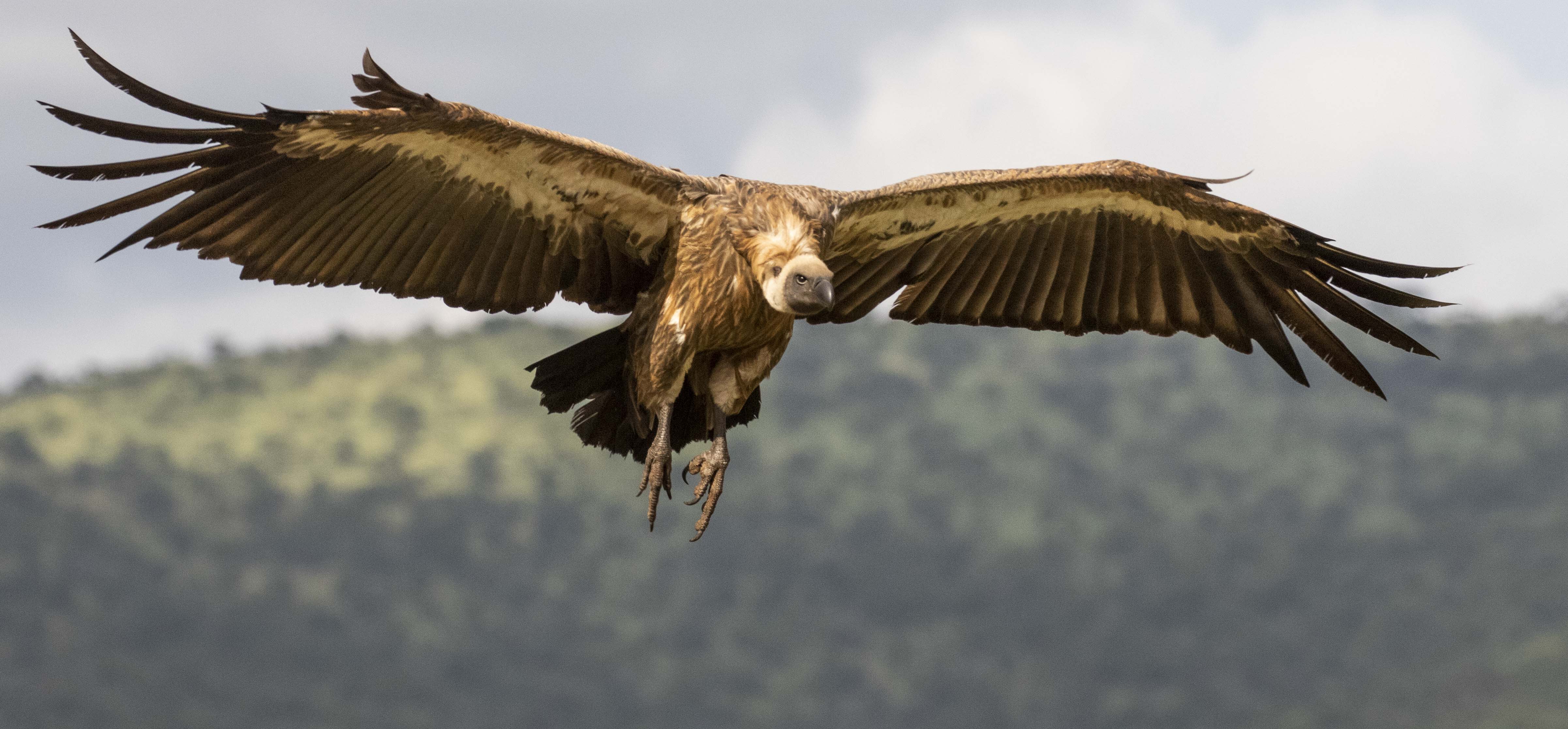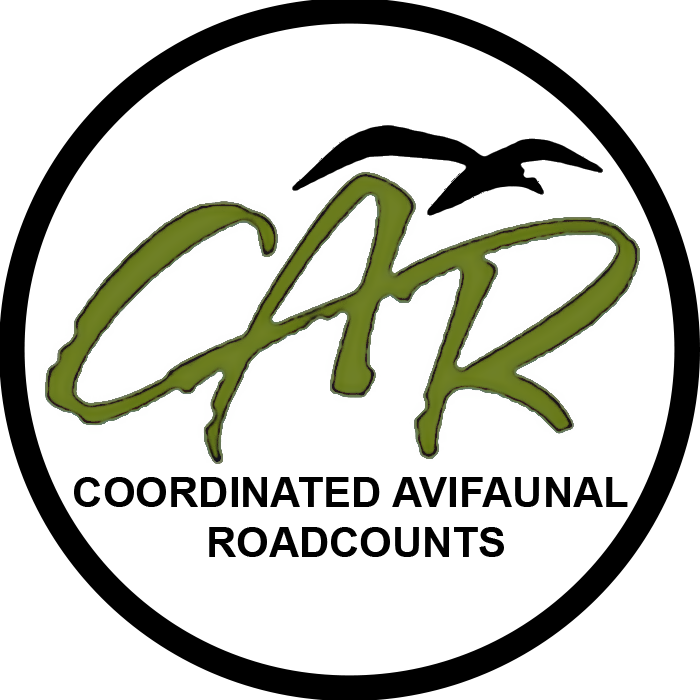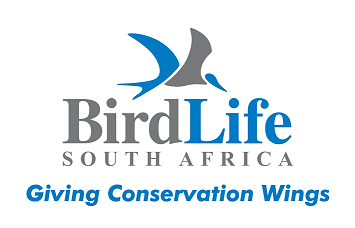White-backed Vulture (Gyps africanus)
CAR summary data
Habitat and noted behaviour
Sightings per Kilometre
Please note: The below charts indicate the sightings of individuals along routes where the species has occured, and NOT across all routes surveyed through the CAR project.
Regional Status

Global Status


IUCN Data (Global)
IUCN 2024. IUCN Red List of Threatened Species. Version 2024-1 (www)Assessment year: 2021
Assessment Citation
BirdLife International 2021. Gyps africanus. The IUCN Red List of Threatened Species 2021: e.T22695189A204461164. Accessed on 10 December 2025.Geographic range:
This species is the most widespread and common vulture in Africa, although it is now undergoing rapid declines. It occurs from Senegal, Gambia and Mali in the west, throughout the Sahel region to Ethiopia and Somalia in the east, through East Africa into Mozambique, Zimbabwe, Botswana, Namibia and South Africa in the south. Its global population has been estimated at 270,000 individuals. Consistent with other vulture species, it has declined by over 90% in West Africa (J. M. Thiollay in litt. 2006), and it has largely disappeared from northern Cameroon (P. Hall in litt. 2016), Ghana apart from Mole National Park (Dowsett-Lemaire and Dowsett 2014), Niger (no records away from W National Park since 1997, J. Brouwer in litt. 2012; and no records at all post 2012, J. Brouwer in litt. 2017) and Nigeria (in recent years there have been no sightings in last stronghold of Yankari Game Reserve, nor anywhere else, and it is probably extirpated from the country, P. Hall in litt. 2016). The species has also declined in Sudan and South Sudan (Nikolaus 2006), Somalia (A. Jama in litt. 2011) and Kenya (c.52% declines in Masai Mara over c.15 years, M. Virani in litt. 2006, Virani et al. 2011), but is apparently more stable in Ethiopia (Nikolaus 2006), Tanzania (D. Peterson in litt. 2006), Uganda (short-term increases [Pomeroy et al. 2012]) and across southern Africa, where an estimated 40,000 individuals remain (R. Simmons in litt. 2006, W. Goodwin in litt. 2016). An ongoing study near Kimberley, South Africa, shows the number of breeding pairs has increased by 72% in 22 years (from 50 to 86 breeding pairs) (A. Anthony in litt. 2015). However McKean et al. (2013) suggest that if current levels of exploitation continue in South Africa, the species could become locally extinct by 2034 or sooner. Overall, it is suspected to have declined very rapidly throughout its global range.Habitats:
Gyps africanus is primarily a lowland species of open wooded savanna, particularly areas of Acacia. It requires tall trees for nesting, but has also been recorded nesting on electricity pylons in South Africa (de Swardt 2013). It is a gregarious species congregating at carcasses, in thermals and at roost sites. It nests in loose colonies.Population:
The species's global population was estimated at 270,000 individuals in 1992 (Mundy et al. 1992), but it may now be more than an order of magnitude lower than this due to rapid population declines in recent years (Global Raptor Information Network 2015). The median estimate of the rate of decline, 4.1% annually (2.5-5.4%) (Ogada et al. 2016a), is equivalent to a three generation reduction of 81% (63-89%).Threats:
The species faces similar threats to other African vultures, being susceptible to habitat conversion to agro-pastoral systems, loss of wild ungulates leading to a reduced availability of carrion, hunting for trade, persecution and poisoning (see Botha et al. 2017).In East Africa, the primary issue is poisoning (particularly from the highly toxic pesticide carbofuran), which occurs primarily outside protected areas; the large range sizes of this species and G. rueppellii puts them at significant risk, as this means they inevitably spend considerable time outside protected areas (Ogada and Keesing 2010, Otieno et al. 2010, Kendall and Virani 2012). Hunting with lead ammunition may also be incidentally contributing to species mortality (Naidoo et al. 2017, Garbett et al. 2018). Evidence from wing-tagging and telemetry studies suggests that annual mortality, primarily from incidental poisoning, can be as high as 25% for the species (Kendall and Virani 2012). Cases across Africa suggest that the species may be subject to deliberate and accidental poisoning, respectively (Roxburgh and McDougall 2012, Ogada et al. 2016b): in the former case for belief-based use and to prevent birds from drawing attention to poaching activities. Mass poisoning events include at least 144 White-backed Vultures killed after feeding on an elephant carcass in Gonarezhou National Park, Zimbabwe in 2012 (Groom et al. 2013); 76 died after feeding on 6 poisoned lion carcasses near Ruaha National Park, Tanzania in March 2018 (SSC 2018); 468 died after feeding on 3 elephant carcasses in Botswana in June 2019 (BirdGuides 2019). Modelling has shown that even one poisoned elephant carcass can have a dramatic impact on a population (Murn and Botha 2018).
In southern Africa, vultures are caught and consumed for perceived medicinal and psychological benefits (McKean and Botha 2007), and the decline and possible extirpation in Nigeria has been attributed to the trade in vulture parts for traditional juju practices (P. Hall in litt. 2011). The species is recorded in trade in West and Central Africa, with an estimated 924-1,386 individuals traded over a six year period in West Africa, probably representing a significant proportion of the species's regional population (Buij et al. 2016). In South Africa, White-backed Vulture is one of the preferred vulture species in trade, according to a survey of traditional healers and traders (McKean et al. 2013). As a result of this and environmental pressures, it is predicted that the population in Zululand could become locally extinct in 26 years, unless harvest rates have been underestimated, in which case local extinction could be 10-11 years away (McKean and Botha 2007). There is also evidence that it is captured for international trade; for example in 2005, 13 individuals of this species being kept illegally in Italy were reportedly confiscated (F. Genero in litt. 2005).
In 2007, diclofenac, a non-steroidal anti-inflammatory drug often used for livestock, and which is fatal to Gyps spp. when ingested at livestock carcasses, was found to be on sale at a veterinary practice in Tanzania (BirdLife International 2008). It was also reported that in Tanzania, a Brazilian manufacturer has been aggressively marketing the drug for veterinary purposes (C. Bowden in litt. 2007) and exporting it to 15 African countries (BirdLife International 2008). However, given that livestock carrion is not generally left out for scavenger consumption, this is likely to have less of an impact than it has in south-east Asia (C. Kendall in litt. 2016).
Electrocution on powerlines is also a problem in parts of its range, and it is vulnerable to nest harvesting or disturbance by humans (Bamford et al. 2009); perhaps more so than G. rueppellii, as it breeds in trees rather than on inaccessible cliffs (C. Kendall in litt. 2012). Additionally, the wild ungulate populations on which this species relies have declined precipitously throughout West and East Africa, even in protected areas (Western et al. 2009, Botha et al. 2017), and, despite increased livestock numbers, improved animal husbandry and carcass disposal has reduced the number of livestock carcasses available (Mundy et al. 1992). There is also a minor threat from road traffic, with individuals occasionally killed by vehicles (BirdLife Botswana 2008). Reported threats in the Athi-Kaputiei area in Kenya (an important breeding site for the species) include wind energy development, illegal logging of large trees (although Kendall et al. [2017] concluded that tree availability was not a limiting factor for vultures breeding in Masai Mara National Reserve), and natural gas exploration (Shema 2019).
Conservation measures:
Conservation and Research Actions UnderwayCITES Appendix II, CMS Appendices I & II, Raptors MoU Category 1. The species is covered by a Multi-species Action Plan (MsAP) for the conservation of African-Eurasian vultures (Botha et al. 2017). The species occurs in a number of protected areas throughout its range, and ongoing monitoring efforts are underway in Kenya, Tanzania, South Africa, Namibia, Ethiopia, and Botswana with plans to extend these to Zambia, Zimbabwe and Mozambique (BirdLife Botswana 2008, C. Kendall in litt. 2016).
In 2007, a survey began to establish the extent of diclofenac use for veterinary purposes in Tanzania (Woodford et al. 2008), and in 2008 an awareness-raising campaign at a conference of the World Organisation for Animal Health in Senegal led to a resolution being adopted unanimously by more than 160 delegates to "request members to consider their national situation with the aim to seek measures to find solutions to the problems caused by the administration of diclofenac in livestock" (C. Bowden in litt. 2008, Woodford et al. 2008). A press release was also circulated in July 2007 to raise awareness of the impacts of hunting for medicinal and cultural reasons in southern Africa (McKean and Botha 2007), while BirdLife Botswana have launched a campaign to tackle illegal poisoning (Anon. 2013). At the 2014 Conference of the Parties of the Convention on Migratory Species, a set of guidelines to address poisoning was formally adopted (Ogada et al. 2016a). The Hawk Conservancy along with the Endangered Wildlife Trust are currently working on providing training and equipment for anti-poisoning teams so that field staff will have the skills and equipment to respond to a neutralise poisoned carcasses (C. Murn in litt. 2016). Since 2015, more than 1,500 rangers, veterinarians, police and other law enforcement and conservation staff have been trained in poisoning response and intervention in 10 countries, and initial results suggest that this can reduce vulture mortality by up to 30% (SSC 2018).
The species is listed as nationally Critically Endangered in the Eskom Red Data Book of Birds of South Africa, Lesotho and Swaziland (Allan 2015), and Endangered in Uganda and Namibia (Brown and Simmons 2015, WCS 2016).
Conservation and Research Actions Proposed
As part of the Multi-species Action Plan for African-Eurasian Vultures, over 120 key actions were put forward (Botha et al. 2017). Of these, 117 are considered relevant to African species. Full details for these can be found in Table 6 of Botha et al. (2017), but those actions considered 'Essential' by Botha et al. (2017) are presented here.
The two objectives with the most essential actions are to address knowledge gaps, and to reduce vulture unintentional mortality caused by the hunting of vertebrates. Botha et al. (2017) say that the essential actions when trying to address knowledge gaps are to monitor the population sizes, distributions and trends; conduct a study to put a value on the ecosystem services and eco-tourism benefits vultures provide; and develop criteria for Vulture Safe Zones and implement these throughout the range states of the MsAP. To address the objective to reduce unintentional vulture mortality, Botha et al. (2017) suggest an overall analysis of poisoning's role in human-wildlife conflict, focusing on vultures; further awareness campaigns; training of staff to rapidly respond to poisoning incidents; and review and enforce penalties for wildlife poisoning, and if necessary introduce new penalties.
Further objectives also look into combating vulture mortality due to a range of factors. To combat the threat from NSAIDs, the essential actions proposed by Botha et al. (2017) are to prohibit the use of vulture-toxic NSAIDs in livestock and substitute them for vulture-friendly alternatives; and develop and implement a formal process to identify whether veterinary NSAIDs are toxic prior to them going on the market. For the threat from lead poisoning, the essential action proposed by Botha et al. (2017) is to implement CMS Resolution 11.15 as well as encouraging the voluntary uptake of lead ammunition bans in countries not part of CMS. In order to combat the threats from illegal trade and sentinel poisoning awareness and engagement programmes with stakeholders and training of rapid response units, respectively, have been proposed as essential actions (Botha et al. 2017; Murn and Botha 2018). There is potential for communal conservancies to raise awareness of vulture conservation in their constituencies (Craig et al. 2018). The threats from infrastructure (collisions and electrocution) have similar essential actions, which are to conduct sensitivity mapping exercises to identify key regions; and promoting CMS guidelines to reduce mortality due to these threats (Botha et al. 2017).
Finally, Botha et al. (2017) recommend as an essential action the establishment of a framework to effectively implement the MsAP, including both global and regional coordination units, which may be key to implementing not only these other essential actions, but as many of the other high and medium priority actions laid out in the action plan.
 Login
Login


